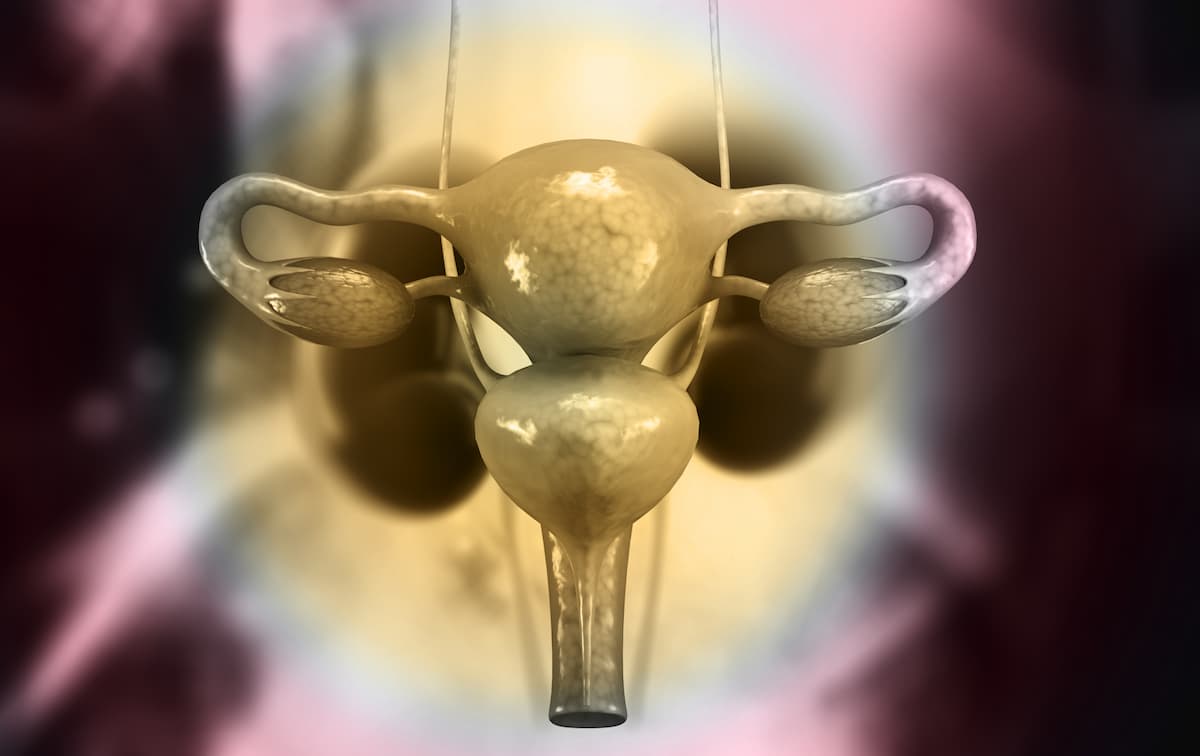Afuresertib/Paclitaxel Shows No Survival Difference vs Paclitaxel in PROC
Although there was no statistical significance in survival data, afuresertib/paclitaxel improved PFS vs paclitaxel in patients with the pAKT biomarker.
Although there was no statistical significance in survival data, afuresertib/paclitaxel improved PFS vs paclitaxel in patients with the pAKT biomarker.

Afuresertib, an ATP-competitive pan-AKT inhibitor, plus paclitaxel demonstrated no significant differences in progression-free survival (PFS) or overall survival (OS) compared with paclitaxel monotherapy in patients with platinum-resistant ovarian cancer, although biomarker-driven strategies may enhance treatment outcomes, according to results from the randomized phase 2 PROFECTA-II/GOG-3044 trial (NCT04374630) presented at the 2025 Society of Gynecologic Oncology Annual Meeting on Women’s Cancer (SGO).
At a data cutoff date of October 31, 2023, the combination of afuresertib plus paclitaxel elicited a median PFS of 4.3 months (95% CI, 3.58-5.62) vs 4.1 months (95% CI, 2.63-5.36) with paclitaxel alone in the intention-to-treat (ITT) population (HR, 0.7; 95% CI, 0.5-1.1; P = .139). The median OS was 11.2 months (95% CI, 8.38-13.77) vs 13.1 months (95% CI, 7.75-18.00), respectively (HR, 1.2; 95% CI, 0.77-1.81).
In the ITT population, the confirmed overall response rate (ORR) was 25% (95% CI, 17.1%-35.0%) with the combination treatment vs 18% (95% CI, 8.4%-30.9%) with paclitaxel alone. The confirmed disease control rate (DCR) was 68% (95% CI, 57.5%-76.7%) vs 57% (95% CI, 42.3%-70.6%).
In patients with the biomarker pAKT greater than 1, the median PFS was 5.4 months (95% CI, 3.42-6.41) in the combination arm vs 2.9 months (95% CI, 1.25-not evaluable [NE]) with paclitaxel alone (HR, 0.4; 95% CI, 0.12-1.00); in patients without the biomarker pAKT, the median PFS was 4.4 months (95% CI, 2.83-6.97) compared with 2.9 months (95% CI, 1.41-6.74), respectively (HR, 0.7; 95% CI, 0.39-1.27).
“Effective treatments for [platinum-resistant ovarian cancer] remain limited, thus novel agents are needed,” presenting study author Thomas J. Herzog, MD, the Paul and Carolyn Flory Professor and deputy director of the University of Cincinnati Cancer Center and vice chair of the Quality and Safety Department of Obstetrics and Gynecology President at the Gynecologic Oncology Group Foundation, stated in the presentation. “Biomarker-driven strategies targeting phosphor-AKT may refine patient selection and enhance treatment outcomes in [platinum-resistant ovarian cancer]. However, further validation will be required to confirm this biomarker strategy.”
A total of 150 patients were randomly assigned, in a 2:1 ratio, to receive either 125 mg of oral afuresertib once daily and 80 mg/m2 of paclitaxel on days 1, 8, and 15 every 3 weeks (n = 99) or paclitaxel monotherapy (n = 51).
Eligible patients had platinum-resistant ovarian cancer, including fallopian tube and primary peritoneal carcinoma, and a relapse 1 to 6 months after last dose of first-line platinum-based therapy. Additional criteria included progression on 1 to 5 prior chemotherapies, no more than 1 of which occurred after platinum-resistant ovarian cancer diagnosis; an ECOG performance status from 0 to 2; and at least 1 measurable lesion per RECIST v1.1.
The trial’s primary end point was PFS assessed by investigator. Secondary end points were OS, ORR, duration of response, DCR, and CA-125 response.
The median age of patients was 61 and 60 in the combination arm and monotherapy arm, respectively; the majority of patients were treated with prior bevacizumab (Avastin; 78.8% and 84.3%), received 1 to 2 prior lines of therapy (77.8% and 80.4%), had an ECOG performance status of 0 (58.2% and 43.1%), had high-grade serous histology (80.8% and 86.3%), and had metastases (81.8% and 90.2%). Phospho-AKT per immunohistochemistry was greater than 1 in 40.0% and 30.6% of patients and greater than 3 in 27.7% and 22.2%.
Regarding safety, any grade treatment-emergent adverse events (TEAEs) occurred in 99.0% of the combination arm and 97.9% of the monotherapy arm; CTCAE grade 3 to 5 TEAEs occurred in 69.7% and 51.1%, respectively. TEAEs led to any drug discontinuation in 20.2% and 6.4%, and any drug interruption in 76.8% and 68.1%. The most common TEAEs included diarrhea (64.6% and 19.1%), anemia (54.5% and 44.7%), neutropenia (50.5% and 51.1%), and fatigue (45.5% and 38.3%).
The study authors cited high compliance and a patient group that aligns with the real-world platinum-resistant ovarian cancer population as strengths and no dose optimization and potential pharmacokinetic differences in the US vs China populations as weaknesses.
Reference
Herzog TJ, Liao JB, Finkelstein K, et al. An open-label randomized active-controlled phase II clinical study to assess the efficacy and safety of afuresertib plus paclitaxel versus paclitaxel in patients with platinum-resistant ovarian cancer (GOG 3044). Presented at the 2025 Society of Gynecologic Oncology Annual Meeting on Women’s Cancer (SGO); March 14-17, 2025; Seattle, WA.